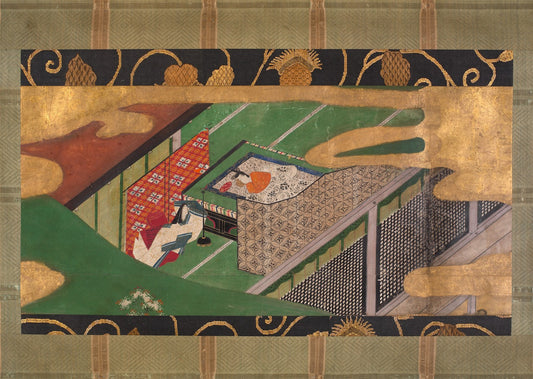Feature image: Primavera detail via Medium
The Three Graces—daughters of Zeus, entourage of Aphrodite—are a classic trio. According to the ancient Greek poet Hesiod, these three women all represented different ideals that corresponded to their names. Algaia represented radiance, Euphrosyne represented joy, and Thalia bloom. Together, these women personified the traditionally feminine ideals of charm and beauty. They have been depicted time and again in artistic works from the 1st century C.E. to the present day. The Graces have become an iconic trio in the art world. The Three Graces often appear partially or fully nude, tenderly embracing each other. Historically, their appearance and artistic composition went largely unchanged, but their depictions have begun to shift in recent decades. In the contemporary age, these women have been reimagined through a feminist lens as black men and as intersex individuals.
Pompeii Fresco, 1st Century C.E.
This fresco was discovered in Pompeii and is dated to the 1st century C.E. The three women hold sprigs of myrtle, a plant associated with Aphrodite that symbolizes love. Their physical arrangement in the composition is seen replicated many times in later representations. The three stand shoulder to shoulder, with the center grace’s back to the viewer and a hand draped on the other’s shoulders. The positioning is aesthetically pleasing and shows the connection and intimate relationship between these three sisters and the ideals they represent.

Sandro Botticelli, Primavera (1477)
Sandro Botticelli’s Primavera depicts the arrival of spring and features Venus (Aphrodite) at its center. Among the other figures from Greek mythology are the three graces. They stand in a similar configuration as previous iterations and are placed on the left side of the canvas. The center grace is depicted with her back to the viewer and holding hands with her sisters, forming a circle. Their elegantly placed arms make the graces look like they are dancing and help reinforce the symbolism of Aphrodite as the goddess of love and beauty.

Raphael, The Three Graces (1503-1505)
Raphael’s version of these women finds themselves in the exact same configuration as the fresco from Pompeii. Instead of holding myrtle though, these women hold apples and have jewelry hanging around their necks and across their heads. The apples are likely a reference to Hesperidia, who granted immortality to mortals through apples.

Antonio Canova, The Three Graces (1814)
This marble statue rendering of the graces feels very intimate. Here, the three women stand, huddled together, arms wrapped around each other and gazing deeply into one another's faces. The grace on the left wraps her arm around the center grace and lovingly strokes her face. The work is tender, soft, and delicate.

Robert Delaunay, The Three Graces (1912)
Robert Delaunay depicts the graces through the cubism style. Legs, shoulders, and hands appear in disjointed forms that make the mind work to make sense of the composition. Despite this, the viewer can still discern that classic arrangement, with the center woman’s back to the viewer.

Joel-Peter Witkin, The Graces, Los Angeles (1988)
In The Graces, Los Angeles, Joel-Peter Witkins challenges society's rigid perceptions of gender. Here, the normally female graces are replaced by three intersex figures. Intersex individuals face high rates of discrimination, but in this work, Watkins asserts that they are the human ideal. In this photo, each grace wears a mask, faces the viewer, and holds what appears to be a monkey head.

Niki de Saint Phalle, Les Trois Grâces (1999)
In this large-scale sculpture, Niki de Saint Phalle reimagines the three graces as joyous, dancing women. The women are black, yellow, and white, and each one wears a brightly colored leotard that is decorated with fun, colorful designs. This work is a celebration of femininity and resides outside of the National Museum of Women in the Arts in Washington, D.C.

Yinka Shonibare, Three Graces (2001)
These sculptures focus on the clothing of the graces. Each grace is headless and draped in beautifully patterned dresses. The dresses reflect those worn by upper-class women of the Victorian age, but the fabric itself is of African origins. The clothing is colorful and packed with patterns. Yinka Shonibare specifically used these African patterns to highlight the intercontinental slave trade that allowed Western nations to brutally colonize and extract the resources of the countries they invaded.
Kehinde Wiley, Three Graces (2005, 2012, 2023)
Kehinde Wiley has revisited the three graces on three separate occasions. Twice, he has reimagined the graces as three black men and the third time as three black women. Wiley often references the works of old master paintings; here is no exception. While all the graces are dressed in modern clothing, each iteration follows the same configuration as those in the past. The two works featuring men are clearly inspired by Raphael’s work, as the graces are shown grasping apples. Instead of looking away from the viewer, these graces seek direct eye contact. The work featuring the three black women is configured similarly to Botticelli’s. The women hold each other's hands, forming a delicate circle as if they are dancing. These paintings invite conversations concerning race and identity by rejecting the way that whiteness has been centered throughout history.
The three graces are an ever-present subject in the world of art. They have been depicted time and again across various mediums—including musical references, as well as in public structures like fountains, trees, and even a building in Liverpool. The three graces are symbols that have been able to shift and change according to the artist and their surrounding social climate. The Three Graces are thus a pervasively recognizable and essential trio within the art world.
©ArtRKL™️ LLC 2021-2024. All rights reserved. This material may not be published, broadcast, rewritten or redistributed. ArtRKL™️ and its underscore design indicate trademarks of ArtRKL™️ LLC and its subsidiaries.







